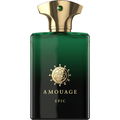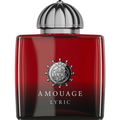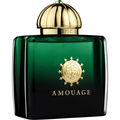
Ninamariah
310 Reviews

Ninamariah
Helpful Review
4
White florals dipped and soaked in a tub full of balsamic and ambery
I was thinking that I would never own a bottle of this one. It seemed to be so beloved, I never saw it anywhere. Last autumn I went into one perfume store and was asking if they have Amouage since I didn't see them. Woman told me that they stopped selling that brand but they do have some bottles left and she can go and take them from the storage. You can just imagine my eyes when I saw this one! After that I have been asking discontinued perfumes in case of some little shops has them hidden. Just a lesson not to give up on dreams of finding something rare.
I don't write a history of Ubar - an ancient city in Oman - here since Jakoparfum has written it perfectly below. Unfortunately I haven't smelled the original perfume, which was released in 1995 and discontinued later. It has been described to be even richer and woodier than the version which was released in the new bottle in 2009. Mine is the new version which has a magnetic cap and therefore it differs the most from the original being anyway more floral and having less incense in it like non magnetic cap version as well (what I have red).
Ubar is an amazing beautiful vintage style white floral. It's nothing like white florals are nowadays and it can't be compared with them at all. I do see the point why it was discontinued since it's challenging, it's not crowd pleasing at all and it smells a bit outdated even if it was reformulated already into easier version. But for me all that complexity makes it so special. It's so multi layered, it's so amazingly blended and every time I wear it I can find new things, small little nuances, different kind of emotions. I love the fact that I can't separate first that overpowering Tuberose which has been made in the same kind of ways in too many perfumes and that heady Jasmine which has nothing new to offer. This is like a time machine to the past. It's very sensual. Intoxicating. Elegant. It's passionate and somehow sinfully lustfull. It's deep and it's strong like many perfumes before mid 90s and it's even a little bit more of everything. The scent is very oriental with balsamic and ambery base. All those flowers seem to be dipped and soaked in them, for a long time. Uber is as glorious as I was thinking it is but I can't stop thinking about the non magnetic cap version, or even the original one. Regardless, I will enjoy my journey with this one since it's stupendous. I just have to be careful with it, no over spraying like with most of my perfumes.
Some day when I'm in the right kind of mood with her, I will analyse more the scent itself. She deserves all my attention.
Thank you for reading, I hope you liked my review and it was helpful.
I would appreciate if you follow me on my
IG and/or YouTube (English subtitles available):
@ninamariahperfumes
I don't write a history of Ubar - an ancient city in Oman - here since Jakoparfum has written it perfectly below. Unfortunately I haven't smelled the original perfume, which was released in 1995 and discontinued later. It has been described to be even richer and woodier than the version which was released in the new bottle in 2009. Mine is the new version which has a magnetic cap and therefore it differs the most from the original being anyway more floral and having less incense in it like non magnetic cap version as well (what I have red).
Ubar is an amazing beautiful vintage style white floral. It's nothing like white florals are nowadays and it can't be compared with them at all. I do see the point why it was discontinued since it's challenging, it's not crowd pleasing at all and it smells a bit outdated even if it was reformulated already into easier version. But for me all that complexity makes it so special. It's so multi layered, it's so amazingly blended and every time I wear it I can find new things, small little nuances, different kind of emotions. I love the fact that I can't separate first that overpowering Tuberose which has been made in the same kind of ways in too many perfumes and that heady Jasmine which has nothing new to offer. This is like a time machine to the past. It's very sensual. Intoxicating. Elegant. It's passionate and somehow sinfully lustfull. It's deep and it's strong like many perfumes before mid 90s and it's even a little bit more of everything. The scent is very oriental with balsamic and ambery base. All those flowers seem to be dipped and soaked in them, for a long time. Uber is as glorious as I was thinking it is but I can't stop thinking about the non magnetic cap version, or even the original one. Regardless, I will enjoy my journey with this one since it's stupendous. I just have to be careful with it, no over spraying like with most of my perfumes.
Some day when I'm in the right kind of mood with her, I will analyse more the scent itself. She deserves all my attention.
Thank you for reading, I hope you liked my review and it was helpful.
I would appreciate if you follow me on my
IG and/or YouTube (English subtitles available):
@ninamariahperfumes




 Top Notes
Top Notes  Litsea cubeba
Litsea cubeba Mandarin orange
Mandarin orange Orange
Orange Violet leaf
Violet leaf Heart Notes
Heart Notes  Jasmine
Jasmine Ylang-ylang
Ylang-ylang Orange blossom
Orange blossom Lily of the valley
Lily of the valley Rosewood
Rosewood Tuberose
Tuberose Freesia
Freesia Base Notes
Base Notes  Copaiba balsam
Copaiba balsam Amber
Amber Patchouli
Patchouli Sandalwood
Sandalwood Vetiver
Vetiver Vanilla
Vanilla

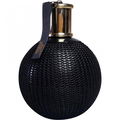


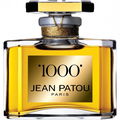
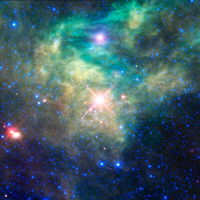

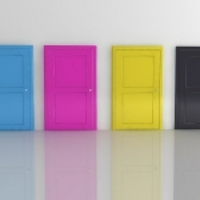





 Lily3013
Lily3013 Franco91
Franco91 Eggi37
Eggi37 Setterliebe
Setterliebe LaVioletta
LaVioletta Adhira
Adhira Tabla
Tabla Bastian
Bastian Pluto
Pluto Ergreifend
Ergreifend

































